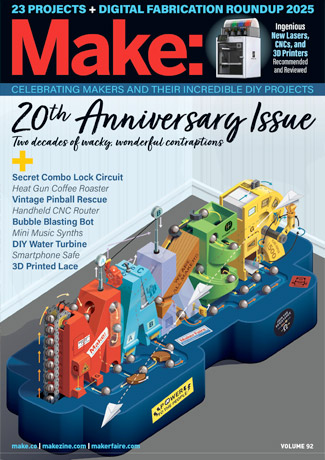
Note: This excerpt was adapted from the introduction to Wolf Donat’s new book, Make a Raspberry Pi-Controlled Robot, a step-by-step tutorial on indeed, building your own robot rover, fresh from Make: Books.
I like to call this robot a rover, as I tried to pattern it after NASA’s designs. Figure 1-1 shows the general outline of the finished rover. It’s not nearly as robust as NASA’s versions, of course, and you’ll notice that its four (not six) wheels don’t sit on their own independent shock absorbers, but the design is a proven one.

To balance on two feet, a robot’s internal sensors must constantly measure where the robot’s center of gravity (COG) is, and then determine where the robot’s feet are, and then check to see that the COG is over at least one of the robot’s feet, preferably over a line between the robot’s feet, or at most, very slightly offset from that line (but not too far). If the robot’s COG is too far to one side, the robot’s brain must send the command to flex the leg on that side to tilt the robot ever so slightly in the other direction, bringing the COG to a more stable location, without going too far in the other direction. And if the robot is carrying something, all those values need to be recomputed on the fly.
So there are several advantages to using wheels. First, not having to balance means that the Pi’s computing power (and servo power) can be spared for other tasks, such as taking temperature samples or moving the robot arm. Second, depending on the type of wheels you use, a wheeled vehicle can go all sorts of places that a bipedal robot can’t. And third, wheels can also be cool—I refer you to R2-D2, the Mars Curiosity rover, and the Mars Exploration rovers (Spirit and Opportunity) for examples of pretty cool wheeled robots.


My solution: I used the wheels from a Power Wheels vehicle. They’re large and impressive, but because they’re made of plastic, they hardly weigh anything. Of course, that led to further challenges, such as mounting those wheels to a non–Power Wheels axle, but as you’ll see, those issues were solved as well, often with a combination of screws, nuts, bolts, and generous applications of epoxy and cold-weld.
The final design, assuming you follow my step-by-step instructions, can be seen here:

ADVERTISEMENT







